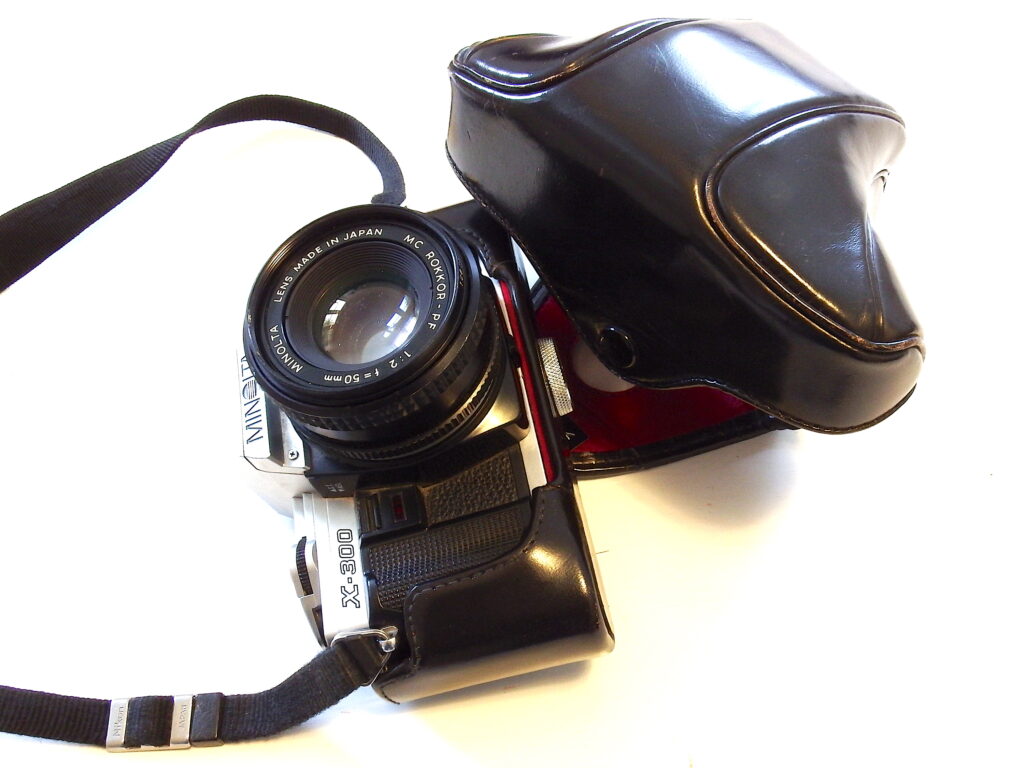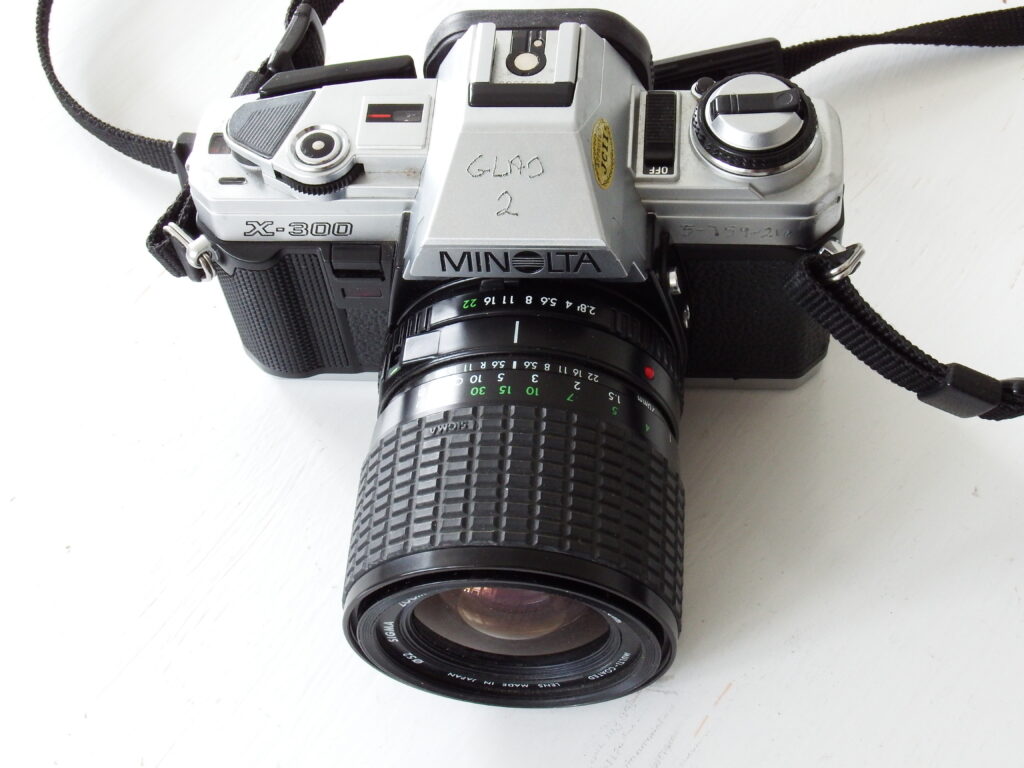This will just be a very short review as I’we only shot a few rolls of film with this camera, but anyway feel that I know it quite well having shot a lot of other Minolta SLRs from the same period – the X-500, X-570, XG-M and a few other. And they resemble each other a lot, and though I find the X-300 a highly capable camera, my preferred camera in this series is the X-500 for a bit more functionality. But price to value the X-300 is a clear winner as it can be had for very little.
The X-300 was produced from 1984 to 1990 and used the MD mount for which large amounts of very high quality lenses are available. The MD Rokkor lenses of the period were famed for high sharpness, good contrast, and nice color rendition – although that always depend on personal preference.
The X-300 is a compact camera though not as compact as the likes of the Olympus OM series, and the Pentax M series. It is a camera capable of full manual or aperture priority shooting, all the time with the built in light meter telling you what its sense of correct exposure would be. It seems to be reasonably good at judging exposure, at least I haven’t had any problems getting technically decent images.

Although, being the cheapest of the Minolta X-series of cameras I find this camera very well build and quite inspiring to handle. I often dislike the low end models for lack of manual abilities, but this low end model gives extremely much functionality and a high value for the buck.
But let’s have some facts, and I find these astonishing for such a low end camera.
- A 35mm film Single Lens Reflex (SLR)
- Meter built in to the pentaprism housing, measuring through the lens when the mirror is down but not during exposure
- Cloth curtain focal plane shutter able of 1 second to 1/1000 second exposure plus bulb mode in manual mode and 4 seconds to 1/1000 second in aperture priority
- Exposure mode of full manual or aperture priority
- Shutter speed LED display in the viewfinder showing either in aperture mode the automatically chosen speed, or in manual mode both the speed you have set and the setting the light meter suggests.
- AE lock button making it possible to lock the exposure on a certain part of the scene in automatic mode
- Attachment for cable release on the side of the lens
- Film sensitivity (ISO settings) from 12-3200
- Power switch that prevents accidental firing the shutter, but it is not necessary to set this to the off position to save battery, as that happens automatically after a few seconds
- 10 second self timer
- Runs on two cheap LR44 batteries

I have a nice old fashioned leather casing for my camera. It fits the camera with the normal 50mm lenses except the macro, which is a bit longer. Unfortunately, I often use a Sigma 35-70 f2.8 lens on the camera, and that lens is a bit too long to fit inside the casing. But that lens gives a really nice background blur to the images, and it gives a range of focal lengths that suits my use very well.


The backside of the camera has an ISO / DIN table on it, that is sitting inside a holder for an end-piece from a film pack. That is a nice feature that tells you what film is inside the camera. I put it into the holder when I load the film, and try to remember to remove it, when the film is finished. Not all cameras have this feature, but it is something, that have saved me a number of times, when I have several cameras in use at the same time, all loaded with different film. Then it is hard to remember which camera has which specific film in it.

When opening the camera by pulling the film rewind lever, you are met with a rather simple inner construction. One important point here is, that you have to be careful with the cloth shutter curtain, as a blow to this might destroy it. Uptake spools are found in many versions, the one is this camera is working quite nicely, and it is easy to load the film correctly, which not always is the case with older cameras .

Lets have a look at what images, you can produce with this camera. Some of the shots have been done with the 50mm f2.0, some with the Sigma 35-70mm.
On the left an image shot on the Sigma lens show very nice background separation, as does the image below taken with the same lens. But the “normal” lens for the X-300 can with its aperture of 2 also give nice separation. But the main advantage of this lens is its sharpness corner to corner even at its most open apertures.

So what is my conclusion on this camera? Lets first sum up the pros and cons.
Strong sides:
- Full manual control possible
- Nice range of shutter speeds
- Compact camera size (although not quite Olympus OM series size)
- Sharp lens series available for the camera
- Very bright viewfinder with just the right amount of information
Weaknesses:
- Doesn’t work without batteries like some of the Pentax M series cameras
- Capacitor problem sometimes arise with these models – but it is quite easy to replace the capacitor if are not afraid of removing a couple of screws in the bottom and using a soldering iron
- No depth of field preview
I can clearly recommend this camera if you are looking for a compact camera to learn more about analog photography. The feature set is quite extensive compared to its rather low market price, and if you invest in some of the very high quality glass available for the Minolta cameras, you can produce sharp and correctly exposed images in most situations. If you then later decide you need things like depth of field preview, you can probably sell this camera for the price you paid or even higher, buy a X-500 or some of the other models with more pro features while still using the same lenses.



